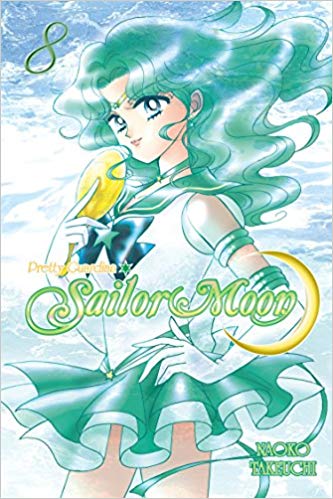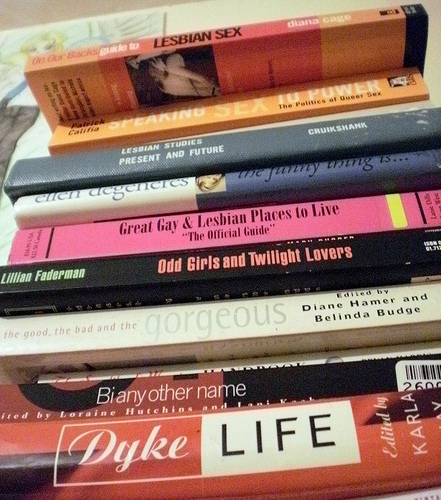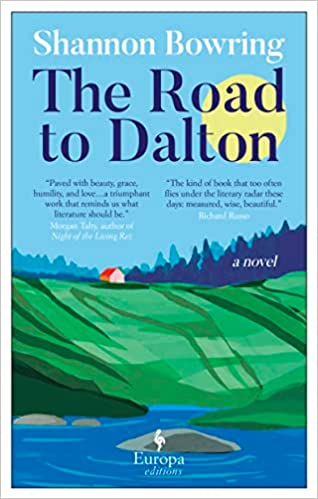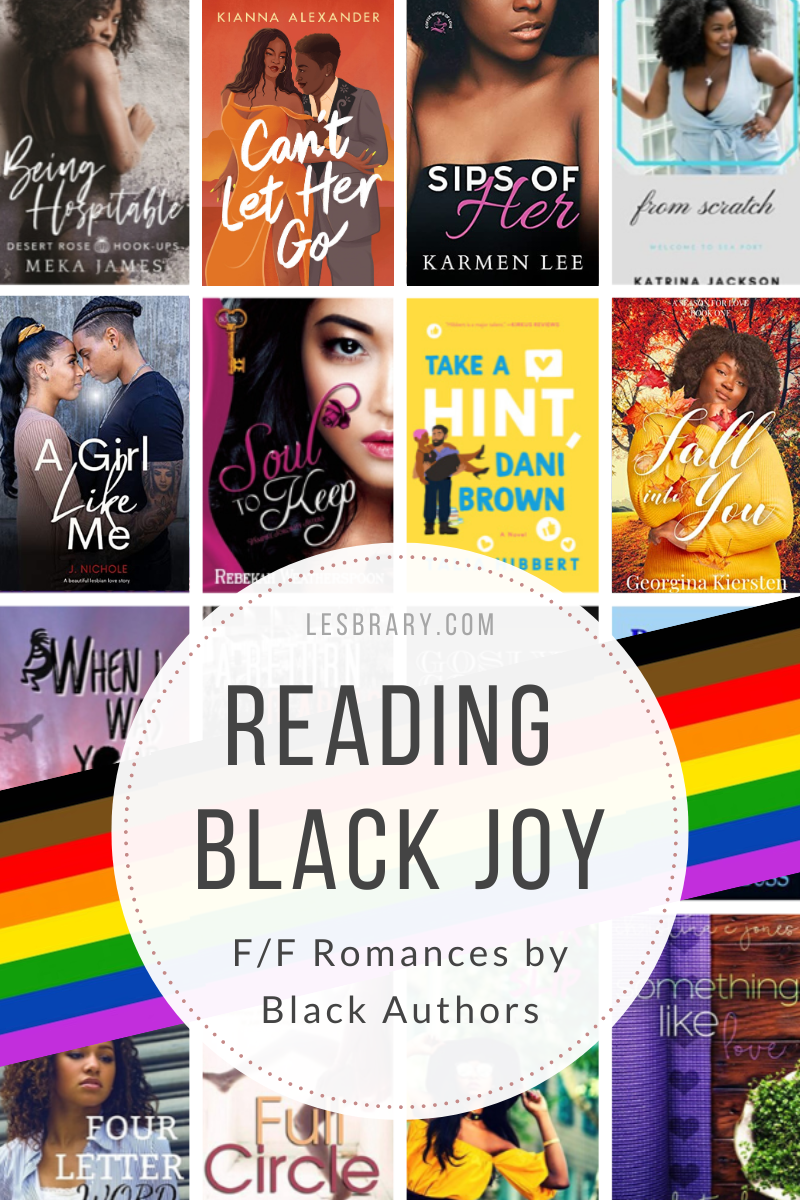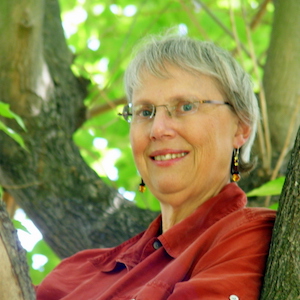 Heather Rose Jones is the author of the Alpennia historic fantasy series: an alternate-Regency-era Ruritanian adventure revolving around women’s lives woven through with magic, alchemy, and intrigue. Her short fiction has appeared in The Chronicles of the Holy Grail, Sword and Sorceress, Lace and Blade, and at Podcastle.org. Heather blogs about research into lesbian-relevant motifs in history and literature at the Lesbian Historic Motif Project and has a podcast covering the field of lesbian historical fiction which has recently expanded into publishing audio fiction. She reviews books at The Lesbian Review as well as on her blog. She works as an industrial failure investigator in biotech pharmaceuticals. When Mallory caught up with Heather, she was just about to take a trip east to visit family in Maine.
Heather Rose Jones is the author of the Alpennia historic fantasy series: an alternate-Regency-era Ruritanian adventure revolving around women’s lives woven through with magic, alchemy, and intrigue. Her short fiction has appeared in The Chronicles of the Holy Grail, Sword and Sorceress, Lace and Blade, and at Podcastle.org. Heather blogs about research into lesbian-relevant motifs in history and literature at the Lesbian Historic Motif Project and has a podcast covering the field of lesbian historical fiction which has recently expanded into publishing audio fiction. She reviews books at The Lesbian Review as well as on her blog. She works as an industrial failure investigator in biotech pharmaceuticals. When Mallory caught up with Heather, she was just about to take a trip east to visit family in Maine.
Q: What is something people would never guess about you?
Ooh, I both love and dread this sort of question because it depends on the audience. People at my day job are startled by the most ordinary of things–like, that I once turned in a homework assignment written in cuneiform on a clay tablet. Most people in SFF fandom don’t know much about my day job as an industrial failure analyst. And I can usually befuddle those who see me as a stuffy amateur historian by mentioning that I once had the police called on me for participating in a dog fight…as one of the dogs. (This story is best heard in person as performance art.) Once people start getting to know me, it’s hard to stump them because then they’re willing to believe almost anything!
Q: You often post photos of your desk rose on twitter. How did that start? Do you have a green thumb?
I have a brown thumb. I kill houseplants. I killed an aloe vera once, and that’s hard. But I live in California and have an automatic watering system, so it’s hard to fail too badly at growing things. For obvious reasons, roses are a meaningful flower for me. (Heather would be too, but it’s harder to grow here and not nearly as picturesque.) I have somewhere around 30-40 different roses growing in my yard but I don’t get to spend as much time enjoying them as I’d like. That’s why I started the habit of bringing a rose (or two) from my garden to put on my desk at work every week. That, and the insufferable smugness of being able to do so practically year round. I do a major pruning around January or February every year and take a break from the desk roses, but the rest of the year they come through. There’s a third, more philosophical reason for the desk roses. I pledged to myself that I’d never wait for anyone else to bring me roses–I’d not only give them to myself, but I’d plant an entire rose garden to make sure.
Q: Who and/or what has influenced your writing the most?
Another hard question. My influences and inspirations tend to get thrown into the mulch pile of my back-brain. By the time they’ve composted enough to fertilize story seeds, it’s hard to identify individual influences. I’ve read so many books from so many different–very different–authors. It’s easier to identify the abstract influences. One is a sense of the fantastic possibilities around every corner in everyday life. Not that I actually believe in fantastic things, but the stories that most inspired me usually involved an ordinary world with strange things happening. I still remember reading Mary Norton’s The Borrowers when I was ten years old and choosing to believe that every old house had colonies of tiny people living in the interstices. Every time I’ve lived in a house with a basement, my imagination has populated that space with monsters and secrets. My second most important influence was the lack of media representation I felt growing up. It was impossible to find characters I could identify with thoroughly. The closest I came were the “lost child from a different plane of reality” like Alexander Key’s The Forgotten Door. I started writing stories so that I could populate them with characters who made me feel less alone.
Q: You have a wonderful website and host the Lesbian Historic Motif Podcast where you’ve been kind enough to share a lot of your research, have you always been interested in history? More specifically, the place of queer people in history?
I fell in love with history when I was ten years old and my family moved to Prague for the year. It’s not that California doesn’t have its own history, but it never really felt like it was my history. Not that Prague was mine either, but the very separation made it feel more attractive and it was more obviously ancient. In college, that love of history led me to the Society for Creative Anachronism and I spent decades chasing down one path then another in that context. I studied names and languages. I used my family’s Welsh origins as a lens for focusing my interest. I turned my love for crafts into a fascination with everyday material cultural.
Queer history was part of it, because I figured out I was a lesbian about the same time I joined the SCA. Unfortunately, the two interests didn’t merge very well at the time. The SCA has gotten better at embracing queer history in the last decade, but that was a bit too late for me and I’d moved on. I started the research that became the Lesbian Historic Motif Project back in the 1980s, in part to figure out what being gay might look like for my medieval persona, and in part because I figured that if I couldn’t find queer people in the history books, at least I could write them into history through fiction.
The blog was a type of self-discipline to encourage me to dig deeper into the research materials I’d been collecting and to share them with other people. The podcast became a way to share the results of that research in a more easily accessible form, as well as to support f/f historical fiction as a genre.
Q: How did you settle on the early 1800’s for your Alpennia Series? Did you decide on the time period or this fictional European location first? What was that process like?
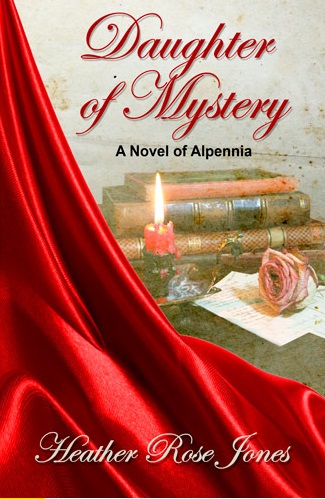 Daughter of Mystery started out intending to be a Regency romance. For logistical reasons, it ended up in an invented country on the European continent, and once you have that setting, you need to work your backstory around the Napoleonic wars unless you want to go all-out secondary world. The time period came first, then the setting, then both were adjusted until everything worked properly. I needed some legal and social structures for the plot I was developing that didn’t match any actual country, so I had to invent one. The fantasy elements weren’t there at first either. I’ll confess that they were partly a marketing decision. I’ve always felt most at home as a writer within SFF and I wanted my first book to be at home there too. I have future projects that are ordinary historical settings, but for my debut, I think it was the right decision to go fantastic.
Daughter of Mystery started out intending to be a Regency romance. For logistical reasons, it ended up in an invented country on the European continent, and once you have that setting, you need to work your backstory around the Napoleonic wars unless you want to go all-out secondary world. The time period came first, then the setting, then both were adjusted until everything worked properly. I needed some legal and social structures for the plot I was developing that didn’t match any actual country, so I had to invent one. The fantasy elements weren’t there at first either. I’ll confess that they were partly a marketing decision. I’ve always felt most at home as a writer within SFF and I wanted my first book to be at home there too. I have future projects that are ordinary historical settings, but for my debut, I think it was the right decision to go fantastic.
Q: We’ve been graced with a lot of period pieces lately, both in the book world and in film/TV. The criticism of these recent works seems to center around them being overly cis het white. Was it a deliberate decision on your part to center a character of color in the third book, or was it just a natural extension of your research?
It was a deliberate decision, but it started earlier than that. Long before I started writing Alpennia, I’d begun challenging myself on my own reflexive biases. (Those biases go all the way back to the time-travel story I wrote with my brother at age ten, which involved an incredibly misogynistic take on the “annoying younger sister” trope.) I started asking myself, “Who are the people of color who must already be present in Alpennia who I haven’t taken note of yet? Where are the religious minorities? Are all my characters exclusively lesbian or do they have a wider variety of experiences?”
I give a lot of credit to the proprietor of the Medieval People of Color website who has collected vast amounts of visual material for helping envision non-homogeneous populations. When I looked at the draft of my first book, Daughter of Mystery, and asked myself “which existing characters in this book are people of color?” one of the people I identified was the unnamed dressmaker hired to dress Barbara toward the end of the book. She became Dominique, who is a significant minor character in every book since, and her daughter Celeste is the most significant secondary character in my new book, Floodtide.
I introduced Serafina, the Ethiopian-Italian student of mysteries, towards the end of The Mystic Marriage because I wanted to be able to plunk her own in center stage in the next book without having to explain why she was there. I’ve tried to make more casual references to the diversity of people present in the background. And of course there’s Antuniet’s Jewish alchemy apprentice in The Mystic Marriage who brings in an awareness that–like most European cities–Rotenek has a Jewish community.
One of my continuing themes is that my main characters all have some reason to stand outside the dominant paradigms –something that both makes them vulnerable and gives them a reason to challenge the status quo. It might be sexuality, gender identity, ethnicity, minority religion, economic circumstance, or physical ability. I want those differences to be an inherent part of their characterization. Something that helps explain their motivations, their goals, and their experiences. And then I want to give them happy stories that operate within the context of their historical setting rather than treating the happiness of marginalized characters as inherently ahistorical.
Q: I really appreciate how subtle your storytelling can be. I’m not sure how many people picked up on Iannipirt/Rene LeFerve as a couple, but I was so delighted to see this relationship which is really based on reading into the subtext of a few scenes, but it really illuminates why Rene is so understanding of Barbara’s life. Is it hard to write characters that could be pegged into modern queer identities when the language didn’t exist for them yet?
This is where all the historic research comes to the fore! By understanding the variety of queer identities that existed in the past, I’m not limited by trying to present characters who fit neatly into modern identity labels. One of the awkward aspects of studying queer history is accepting that people in the past didn’t understand their identities the same ways we do, but that doesn’t mean that we can’t identify with them. People today don’t understand their identities the same way people did in the 1970s when I first came out. It doesn’t mean there’s no connection and continuity.
There is a vocabulary for same-sex relationships in this era, but it isn’t the same one we use. That gives me the freedom to show, rather than tell. I don’t say outright “Jeanne and Serafina are bisexual, while Margerit and Barbara are probably exclusively lesbian, Luzie is much more toward the heterosexual end of the spectrum but open to homoromanticism, while Antuniet can be summed up as ‘Jeanne-sexual’.” Instead I show their interactions, their reactions, their histories, and let the reader draw their own conclusions. I didn’t have to exaplain that Antuniet is demisexual…which is a good thing because I wouldn’t have know to use that word when I first developed her character.
I don’t know that I see René as more sympathetic to Barbara because they’re both gay–there wasn’t a sense that men’s and women’s same-sex relationships had a commonalty back then. It was complicated. But René was almost a father figure to Barbara growing up and while there was always a social distance, he loves her deeply and wants her to be happy.
I rather enjoyed embedding the clues for the reader about Iannipirt and René. If you’re paying attention, there’s one line that makes everything completely obvious–but only if you understand the rules and conventions of polite language that have been established throughout the rest of the setting. (Specifically: the line where Iannipirt refers to LeFevre by his given name.) I do something similar in reverse in Floodtide in showing how it’s possible for the protagonist Rozild to be oblivious to other people’s same-sex relationships because they fall within the conventions for how non-sexual romantic friends are expected to act.
Q: Floodtide comes out this month, what inspired you to break away from the characters we’ve grown to love and focus on another part of Alpennia Society?
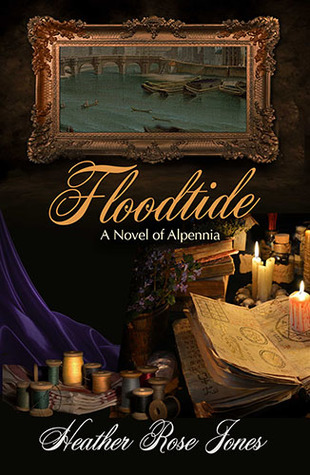 With regard to the characters, it isn’t intended to be a breaking away so much as shifting gears. The original inspiration came from looking around at all the teenage characters I was accumulating–Anna, Iulien, Brandel, Celeste, Aukustin–and thinking it would be fun to do something with them as a group before they “aged out” and had to be adults. The premise shifted as it developed. I came up with an entirely new character, Rozild, to be my first-person protagonist and quietly inserted her into the background of Mother of Souls. There’s another entirely new side character, Liv the river-girl. And I found that there wasn’t a good way to include Anna, the alchemy apprentice, because she was already solidly living an adult life.
With regard to the characters, it isn’t intended to be a breaking away so much as shifting gears. The original inspiration came from looking around at all the teenage characters I was accumulating–Anna, Iulien, Brandel, Celeste, Aukustin–and thinking it would be fun to do something with them as a group before they “aged out” and had to be adults. The premise shifted as it developed. I came up with an entirely new character, Rozild, to be my first-person protagonist and quietly inserted her into the background of Mother of Souls. There’s another entirely new side character, Liv the river-girl. And I found that there wasn’t a good way to include Anna, the alchemy apprentice, because she was already solidly living an adult life.
But in structural terms, I wanted to write a story that could be read independently. The previous novels have all built continuously on each other, with the over-arching plots interwoven and the viewpoint characters having continuity. In a different context, that might have worked for the whole seven-book series, but I needed an infusion of new readers. I needed a way to pull eyeballs directly to the new release, rather than announcing, “Hey, I have a new book out but you should read these other three books first.” So part of shifting gears, in addition to a change of central characters, was a different narrative structure and a different emotional focus for the plot. Floodtide is a more immediate story, focused on the concerns of ordinary people. Or so we’re led to believe.
Q: You already have an idea about how the rest of the Alpennia Series plays out (7 or 8 books in total with a few short stories and novellas sprinkled in between). What is your biggest challenge in writing the next book?
The biggest challenge is always time and focus. The blog and podcast are fun and have helped immensely with visibility for my fiction, but they suck up a great deal of my time and energy. And because they have hard deadlines that come every single week, I go through a regular boom-and-bust cycle where I put in the effort to get a couple months’ worth of blogs and podcasts set up so I have breathing space to focus on fiction for a while…and the next thing I know, I need new material again. I get my fiction writing done when I make it a regular, daily part of my routine rather than waiting to “have time,” but everything else demands my attention too. And, of course, there’s the day job that pays the mortgage and allows me to go to conventions and buy all those expensive history books from academic presses. I’m fortunate in having a job that is both challenging and well-paying, but I’m really starting to look ahead to retirement when I can write full time.
Q: If you can tell us, do you plan on keeping up with the same format in book 5, giving each main character their own sections?
Book 5 (Mistress of Shadows) will return to multiple tight-viewpoint characters in alternating chapters. Originally I’d planned for it to have only three viewpoint characters: Barbara, Serafina, and a new character in Paris, but I’ve realized that I need to integrate some of Anna Monterrez’s story into that book instead of putting it in a separate short work.
After that, I’ll need to back off a bit and go for a more omniscient approach. By book 6, I need to bring the reader into scenes that none of my central characters will be present for. I love the challenge of the tight-third viewpoint and the ways you can use it to reveal and conceal, but events are going to start moving more quickly and the narrative will need to be more nimble. It also feeds into my principle that I never want to write the same book twice. I’ve been playing with layering different genres in each book. Changing the narrative approach also helps.
Q: Who is your favorite character in Alpennia (I know it’s hard to choose!), or which character do you most admire and why?
I don’t make any secret that Antuniet is the character of my heart. Antuniet isn’t me, but there’s a lot of me in her. I love all my characters. I stuff them full of little bits of myself and bits of other people I know. Sometimes I tell those people, or they figure it out for themselves! Most of the characters aren’t based solidly on any one specific person. But Antuniet…if I can give her the happy ending she deserves, then it’s almost as if I got one of my own.
Q: Do you have any advice for other aspiring writers, especially those who also have full time jobs like yourself?
My only writing advice is never to take anyone else’s writing advice! There are many, many different right ways to write. There are also some wrong ways. But the only sure-fire wrong way to write is the one that ends up with you never writing anything. I’ve been writing in some form since before I could hold a pencil but with different approaches. Some of them worked better than others. Some were the right method for a specific type of writing and absolutely wrong for other types. If no one method works for me all the time, how could any of them work for someone else? Experiment and find what works for you and then don’t be afraid to change your approach and see if something else works just as well or better.
But for general advice: cherish your writing colleagues, but don’t measure yourself against them or walk in their footsteps. Any time you feel that you have no control over your own writing progress, reach out and give someone else a boost. That’s something you will always have control over.
Q: What was the last thing you watched film or TV? What TV shows are you into?
Currently I don’t have time for much TV. Occasionally I buy an entire season of something from iTunes. I recently devoured Gentleman Jack and I’ve been working my way slowly through the Miss Fisher Mysteries, which is the most recent thing I watched. I enjoy seeing movies in the theater, usually by myself since it’s often on impulse. As a long-time Marvel comics fan, I can usually get suckered into forgetting how much I dislike the tediously unending fight scenes in comic book movies. I also love art-house costume dramas, and if I can turn them into something for my podcast, that’s even better! I had some great discussions about The Favourite about Queen Anne’s girlfriends, and Wild Nights with Emily about Emily Dickinson’s romance with her sister-in-law.
Q: What is something you enjoy doing other than writing?
There was a time that historic re-enactment events would have been at the top of the list, but I drifted away. These days, gardening is my biggest non-writing non-work activity. I have a large, if awkwardly shaped yard with lovely California growing weather and I keep throwing plants at it to see what can survive my haphazard attention. I have a collection of fruit trees: plum, apple, quince, cherry, apricot, medlar, pomegranate, and every type of citrus you can imagine. I always grow tomatoes because there’s nothing like a home-grown tomato fresh off the vine in the hot sun. I have a formal herb garden with a fountain that’s surrounded by a “fence” of all types of berries. Usually I try for some other vegetables, but it depends on how much energy I have at the beginning of spring. One of my recurring themes on facebook is showing off “the produce of my estates” and I love putting up jams, jellies, pickles, and the like to give away as gifts.
Q: What is something sweet or funny or both you have heard from your readers/fans?
My favorite thing to hear from fans is cursing at having kept them up all night when a new book comes out! But I most like hearing from readers who have strongly identified with a character. Just the other day, a friend commented online about how she was re-reading Mother of Souls and was reminded how envious she is of Margerit getting to found her own college. (The sweet part is that the commenter is one of my inspirations for Margerit’s character.) I get regular comments from people about how they appreciate Antuniet as an asexual-spectrum character, without that being the main focus of her story. I very much appreciate it when readers tell me that my stories give them something they haven’t been able to find elsewhere.
Q: If you could replicate one meal or dining experience from your past, what would it be?
One of the types of historic-re-creation activities that I enjoyed immensely was a high-authenticity type of banquet event that included a multi-course meal, entertainment, both planned and spontaneous, where the entire event was a type of performance art. Most SCA banquets focus the authenticity on the recipes (if that much), but these events covered everything from the furniture to the tableware to the way in which the food was served, to the conversation and dancing. I loved being part of the staff for these–it was probably more fun than being one of the sitting guests–as well as all the advance preparations which usually started two years earlier. Sometimes we were able to hold the banquet in an event space that felt like a medieval or Renaissance hall. The events were exhausting and exhilarating. I’d love to live through one of those again. Maybe some day when I have the time, I’ll go back just for one of those, but it won’t be the same without having participated in all the advance preparations and research. My favorite was probably the 15th century Burgundian feast. I’ve always been fond of the 15th century. Some day I need to set a book then.
Q: What is one thing no one ever asks you but you wish that they would?
“Which bank account should we deposit your lottery winnings into?” Just kidding! I’d love for someone to ask me about the relationship between Antuniet’s alchemical stones and the intersection of gemstone lore and synthetic gemstone manufacture. I did so much background research on that. In one way, I want people to take that sort of world building for granted. I want it to feel like all the mystical aspects of the world are just…real. But on the other hand, I had so much fun putting it together, I’d love for an excuse to share it.
